Liberal MP Jason Falinski, who is the chairman of the parliamentary inquiry into housing affordability and supply, has penned a contradictory propaganda piece in The Australian claiming that Australia’s housing woes are caused entirely by a ‘lack of supply’, which is supposedly unaffected by mass immigration:
For years governments, through inaction or special interest lobbying, have denied young Australians their chance at the Australian dream.
The longer the Tax and Revenue Committee investigated housing affordability, the more apparent it became that the usual scapegoats are convenient distractions from the real reasons for this intergenerational theft.
The planners and academics blamed migrants for high house prices. But in the last two years, prices climbed by over 20 per cent while our immigration intake was zero…
[There’s] one inconvenient truth: our affordability challenge comes down to not building enough homes.
This is economics 101 – Marshall’s supply and demand curves. The Centre for Independent Studies, Grattan Institute and CoreLogic all demonstrated that Australia has been under-building for years…
The NSW Treasury noted that to just keep pace with demand, NSW needed to build 42,000 houses a year. Housing targets are short of this…
Shifting the blame to other governments, migrants, investors and builders is just part of their game, while the rest of us suffer the consequences of our nation being unmade before our very eyes.
Falinski argues that “in the last two years, prices climbed by over 20 per cent while our immigration intake was zero”, yet conveniently fails to acknowledge that the federal government’s own National Housing Finance & Investment Corporation’s (NHFIC) flagship report on housing supply and demand forecast that “cumulative new supply is expected to be around 93,000 higher than new demand by 2025”, thanks to the fall in immigration (see next chart).
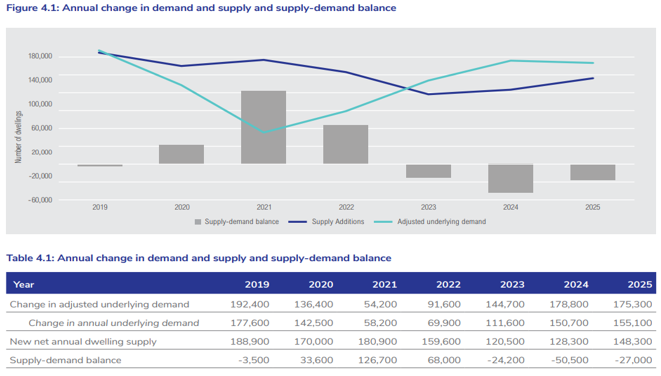
Moreover, the migrant epicentres of Greater Sydney and Greater Melbourne were forecast by NHFIC to experience the biggest surpluses of housing supply:
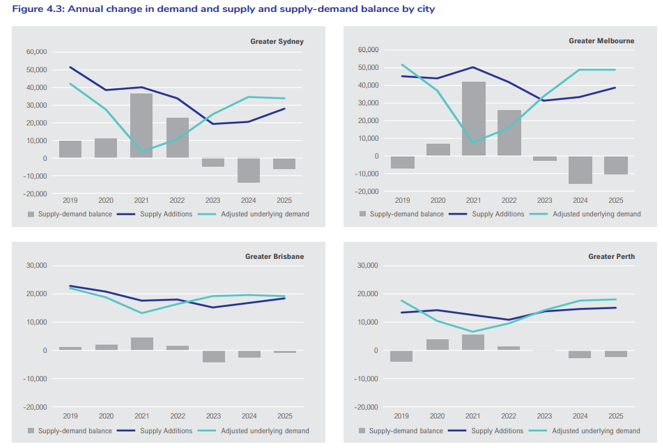
Thus, if immigration is not to blame for the recent run-up in prices, then neither is the scapegoat that we are “not building enough homes”.
As I illustrated in my submission to the parliamentary inquiry into Housing Affordability and Supply, “any housing supply problem is first and foremost an excessive immigration problem”.
Australia’s net overseas migration (NOM) jumped from an average of 90,500 between 1991 and 2004 to an average of 219,000 between 2005 and 2019 – representing an annual average increase in immigration of 140%.
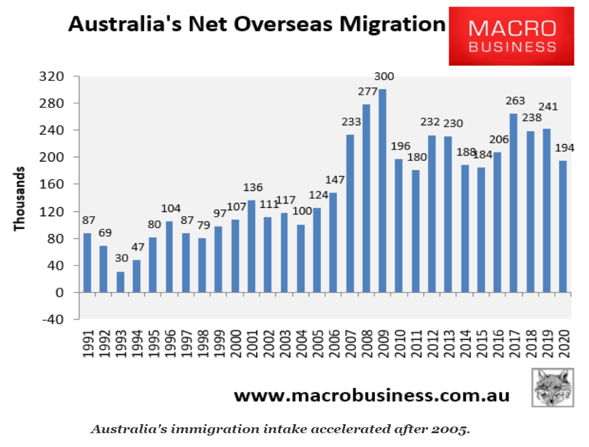
This jump in immigration was the primary reason why “Australia has been under-building for years”.
But after immigration collapsed thanks to COVID, Australia’s ‘housing shortage’ miraculously disappeared, as illustrated by NHFIC above.
Looking ahead, the latest Intergenerational Report (IGR) projects that net overseas migration (NOM) will ramp up to 235,000 people a year for decades to come:
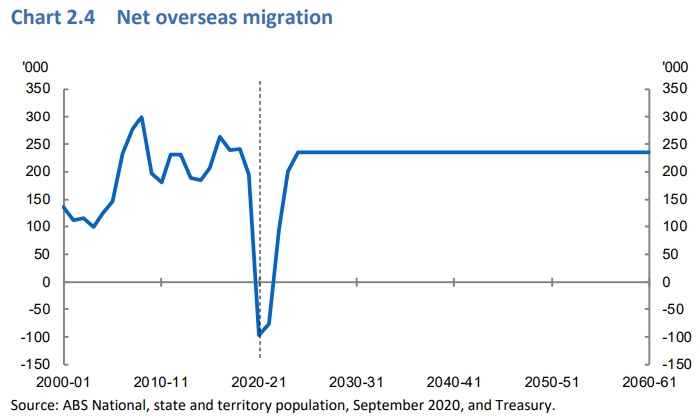
This extreme immigration is projected in the IGR to increase Australia’s population by 13.1 million people (~50%) over the next 40 years to 38.8 million people – equivalent to adding another Sydney, Melbourne and Brisbane to Australia’s existing population.
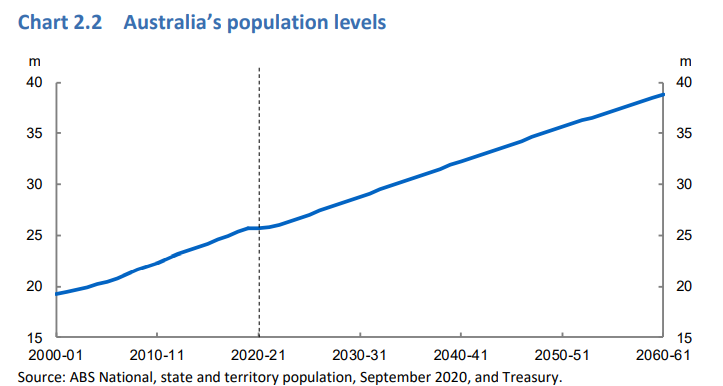
Such a population deluge will guarantee that housing demand swamps housing supply, resulting in worse affordability. It will also consign future Australians to live in high-rise shoe boxes:
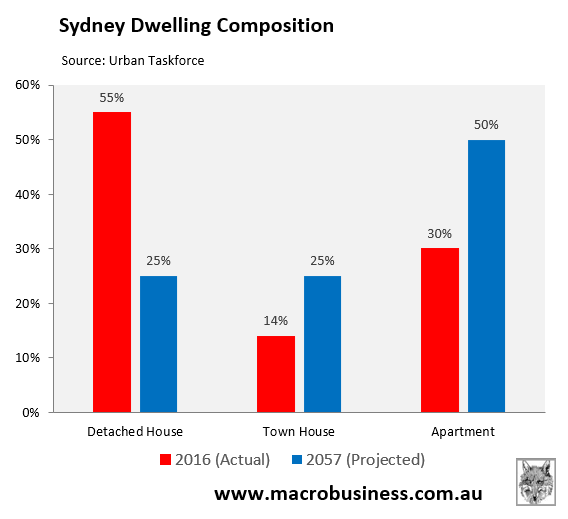
Jason Falinski should be honest and admit that the single best thing the federal government can do to ‘solve’ any housing supply problem is to ensure that immigration does not return to its manic pre-COVID level, nor is raised to the insane 235,000 annual NOM projected by the IGR.
Sadly, Falinski has chosen to gaslight us instead by pointing the finger at housing supply, while denying the primary driver of the ‘lack of supply’: mass immigration.
The first goal of public policy should be to protect the welfare of existing residents and not make a problem worse. ‘Big Australia’ immigration violates this very principle.

